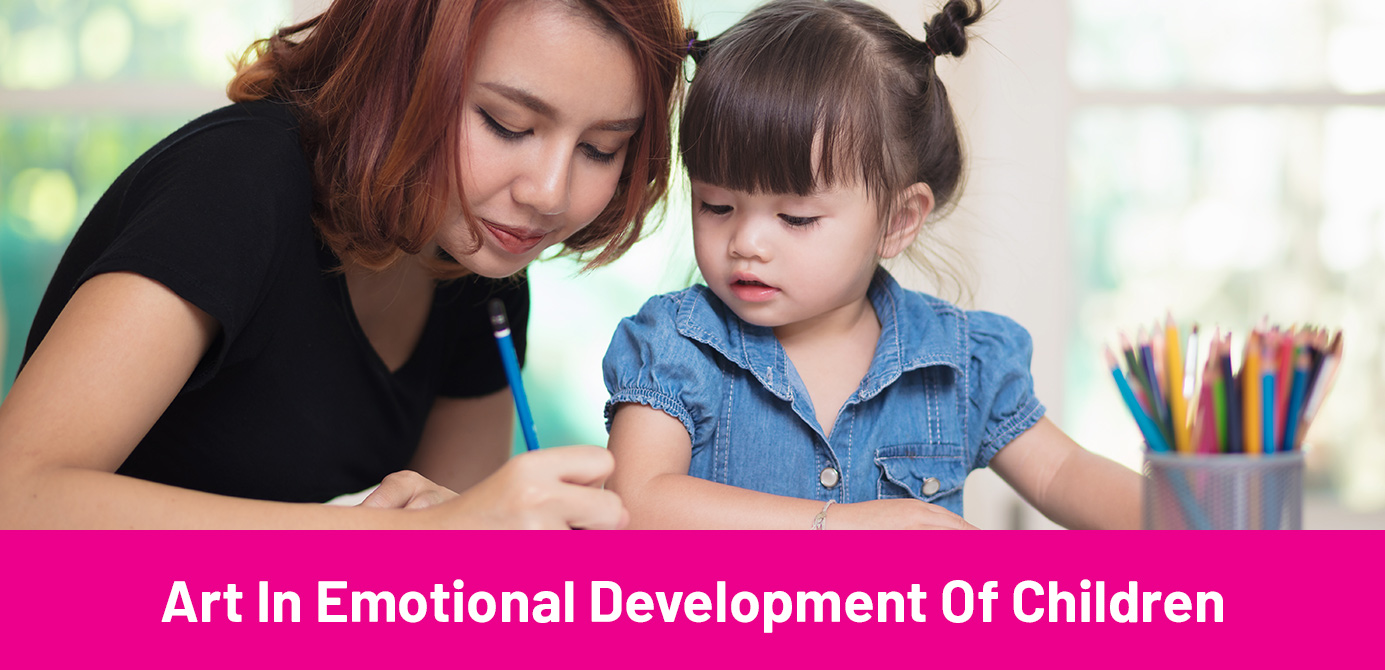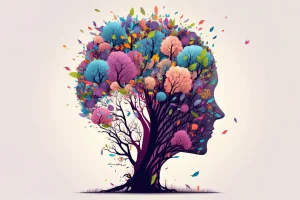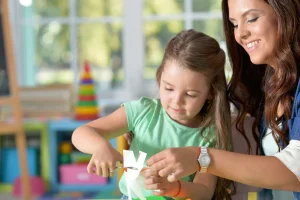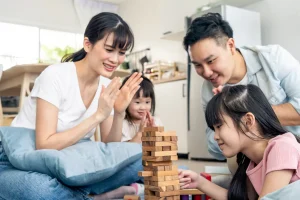Art In Emotional Development of Children
![]()

All children are different and each child learns and develops in a wide range of ways. They assimilate information and acquire skills at their own pace. Children pick up information and skills through their senses and then ‘make sense’ of it in their own minds.
Arts holds a unique place for itself between logic and creativity. Proven social and emotional development strategieshelp make art exciting, engaging and a fantastic way of enriching a child’s social skills, accelerating development, and increasing creativity.
Not only does art give your child the opportunity to express and explore who she is, but also creates a space where your child can grow up in a safe and friendly environment.
The value of art

Self-pride, joy, happiness and fun are promoted through every minute of art, and children find it energising and feel enthusiastic enough to keep their minds flowing with creativity, as well as begin
to understand the value of art.
Art is not about training a child to become the next Picasso or van Gogh, but about giving children the space to explore who they are, and build up life-long transferable skills. Involving a child in art activities expands the creative mind, improves body and spatial awareness, fosters health and promotes wellbeing.
Developing problem solving abilities, being able to work together as a team,and self-awareness are all gifts that painting and drawing bestow upon a child. These are skills, which play a key role in being successful whenchildren grow up and become valued members of the society.
Wax crayons are useful when you have large areas to colour quickly and for creating very large and simple drawings. The unique characteristics of wax crayons make them especially suitable for some wacky ways to try out with your child at home.
The million-dollar question

Most parents often ask a question that seems to bother them a lot, “How will art benefit my child?” The straight answer,Art teaches skills for life. Art allows young children to be more active in improving their gross and fine motor skills and develop creativity. Developing a child’s creativity through improvisation helps them to think and act in the moment and solve problems. Boosting their confidence and self-esteem.
Remember, it is difficult for a child to express complex emotions, especially when she has no words to describe and express what she is feeling. Which is where painting can be of great help for parents to help connect with their child, identify and understand the problem that seems to be troubling their child.
There are many other reasons how everychild will benefit from the arts. Art can lead to a career by itself for some. While others will use art to increase their self-confidence levels and improve social skills. Above all, what all children enjoy is having fun through painting and drawing, while making lots of new friends.
Shaping emotional development

Children tend to express themselves better through painting. Treat it as a coded language children speak. For instance, when a child is painting by choosing only certain colours, she is expressing the state of her mind and the mood she currently in. When she exaggerates certain features in the painting using bolder strokes, she is quietly pointing out something that has caught her interest.
When you find your child painting slowly and deliberately with wide brush strokes using bright colours, she could be telling you how happy she is and is inviting you to join in her fun. Or when she is painting fast and aggressively, she could be communicating about something that has upset her and wants to be cuddled.
Painting allows children to explore emotions freely and find safe ways of expressing them. Learning to express yourself and having such efforts valued and understood can do wonders for your child’s self-esteem. Additionally, painting is a great way to let go of negative emotions or neutralize stress, anger or hate or fear. Or all these emotions.
Managing the mind growth

Think of all the elements that come together to make a painting: the colours, shapes, placement, observation, and interpretation. These are just some of the many things a child learns from painting. Painting involves both sides of the brain, developing creativity and logical thinking. Imagine how doing a simple task of mixing colours can teach a child to be creative and logical.
Lest you forget, the actions involved in painting include, learning to take risks, exercise critical thinking, and understand cause and effect. These are all important traits for any field and lead to invention and innovation. In painting, there are no mistakes. It is the perfect platform to learn the value of making mistakes.
As a parent you will find it difficult to just sit by and hold back suggestions on how to create that little masterpiece that you’d love to frame and hang it up on the living room wall. Resist the urge. It is her work and the best part, there are no mistakes in art.
Learning to work with others

Although painting is an independent activity that allows a child to explore and discover new things on her own. But when done alongside a child of her own age, it becomes an act of sharing. This act of sharing is always a valuable interaction as it imparts to children the lesson of respecting differences.
Remember, no two children will see or sense things in the same way. There are bound to be differences leading to different choices in the colours they use and the forms they depict in their painting. This understanding and being able to respect each other’s creativity eventually becomes an extremely important trait as children grow up.
Gaining control over physical movement

When children are allowed to play with colours and paint with a brush from an early age, it leads to improvement in innovative thinking, greater emotional stability, effortless eye-hand coordination, and strengthening of both gross and fine motor skills. As the child grows, painting allows for these traits to be honed to perfection.
Learning “to observe” by training the eye to see clearly has massive effects on all areas of life. It teaches a child to look past the obvious, go beyond, and to dive deeper into anything that is presented to them. And never to take the world for granted.
The different tools that are used in painting add to the child’s knowledge of how to use objects of a similar nature (such as writing tools). The close connection of the senses to painting also teaches children how to connect deeper with the environment.
Art is a place to belong

Expanding on their innate feelings of play, children explore authentic experiences through art which makes them feel that they have greater sense of self-worth and be proud of their creativity.
The evidence is clear, there are many skills and opportunities to be gained from arts. Helping children build confidence in themselves, discover new skills and the bonds a child can create through art can last a life time.Most importantly, art issomething that makes them comfortable and a platform that will support them in whatever direction they choose to take.
Sure art and painting can be messy, but that is no excuse to not to let your child involved with painting. Because the true beauty of being able to paint lies in the exploration and the new discoveries that your child will make about the world and about herself.
![]()



